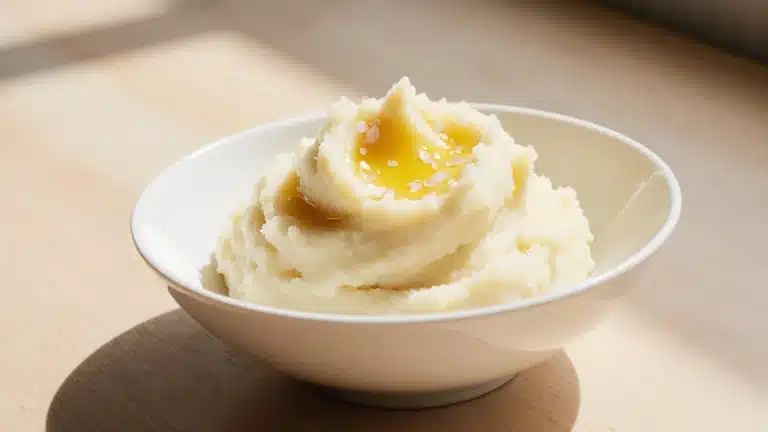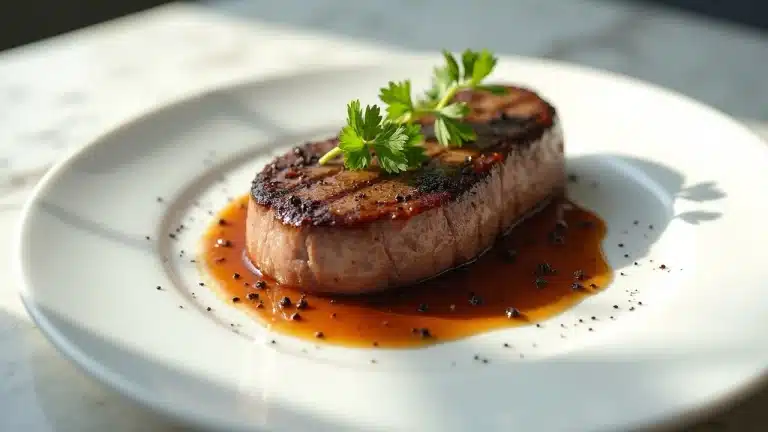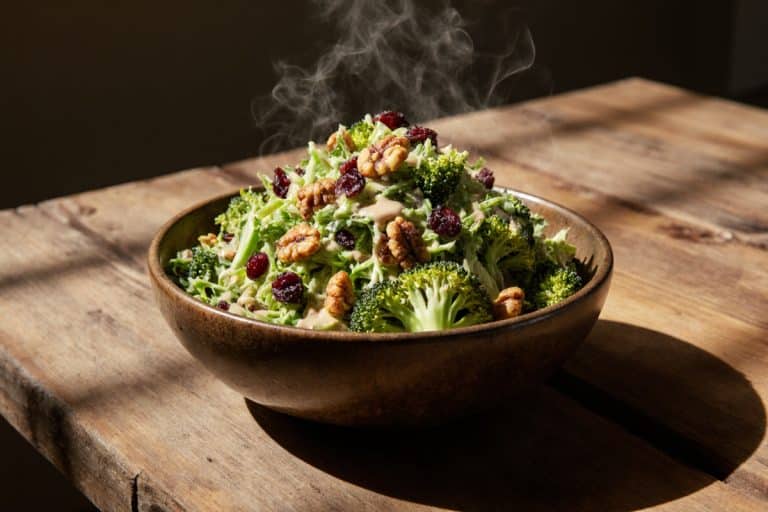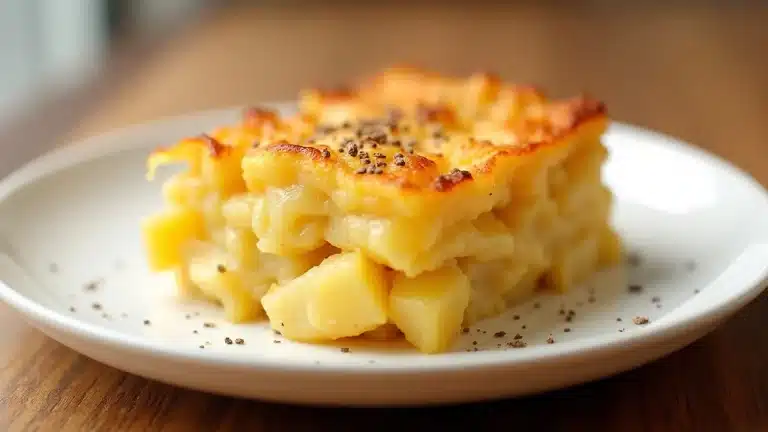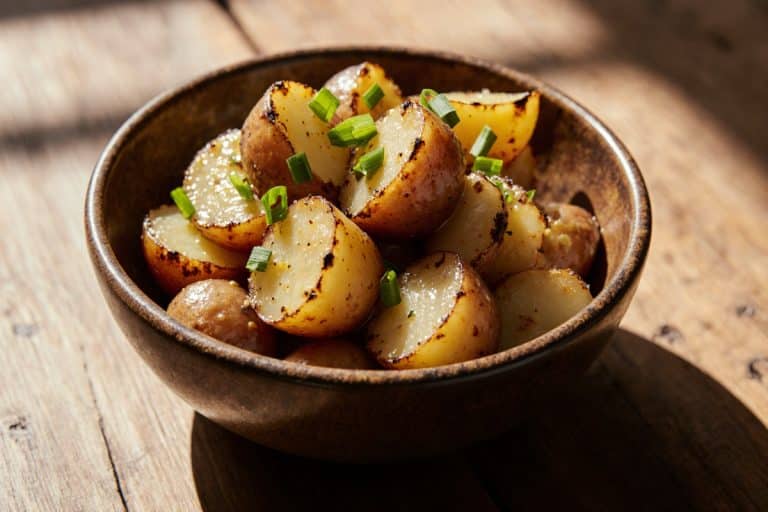Gordon Ramsay Chip Butty Recipe
Gordon Ramsay chip butty is my go-to when I crave something comforting and fulfilling. Picture this: fluffy, crispy chips sandwiched between thick slices of buttered bread, dripping with tangy sauce. I used to settle for soggy fries and mushy bread, but not anymore. Learning to nail each component empowers me in the kitchen—getting the crispy chips just right, building balanced layers of flavor, and achieving that glorious texture. You’re not just making a sandwich; you’re crafting a masterpiece that speaks to your taste buds. Ready to slay that chip butty game? Let’s dive in!

Ingredients, weights and tools you’ll actually need
Exact ingredients with precise measures for a perfect chip butty
This is the shopping list — measured and realistic. For two sandwiches I use 800 g of Maris Piper or Russet potatoes (about 3 medium), 30 g unsalted butter, 15 ml vegetable oil for frying or 10 ml for air-fryer brushing, 4 slices of thick white bread (about 80–100 g total), 30 g mayonnaise (optional), 15–20 g HP sauce or ketchup, and 5 g fine sea salt plus 2 g freshly ground black pepper. If you want a little acid, grab 10 g malt vinegar. For optional add-ins: 50 g grated cheddar, 60 g cooked bacon, or 1 small red onion (50 g) for quick pickling. Total yield: roughly two substantial sandwiches.
Tools: a sharp chef’s knife, mandoline (optional), a heavy-bottomed frying pan or deep pot (3–4 L), an instant-read thermometer, a baking sheet, paper towels, and a digital scale. Weigh your potatoes — eyeballing fries is where soggy chips start. A bit of precision makes a big difference to texture.
Why these quantities and what to prep ahead
I size portions for appetite and what the bread will hold. Eight hundred grams of raw potatoes yields about 500–550 g of cooked chips — enough to pile on two thick chip butties without the sandwich collapsing.
Prep ahead: peel and cut potatoes up to eight hours in advance and keep them submerged in cold water in the fridge to remove surface starch. Dry thoroughly before cooking. Mix your sauce (mayonnaise + 10 g vinegar + pepper) and chill; butter the bread just before assembly to avoid sog. Prep saves you panic when it’s time to fry.
Safety and fridge temps — keep it above common-sense level
Let cooked chips and fillings cool slightly before refrigeration. Aim to cool hot food to 21°C (70°F) within two hours and then store below 5°C (41°F). If fries sit at room temperature for longer than two hours, bin them — bacteria don’t care how tasty they are.
Use an instant-read thermometer. Potato interiors will hit roughly 96°C (205°F) during a proper fry; you don’t usually measure that, so check the oil instead at 170–180°C (340–355°F) for frying. For reheating, bring food to 74°C (165°F) before serving. Temperatures keep you out of trouble.
The bread choice — why thick, soft, slightly stale wins
The bread is the chassis. Thick-shaven white bread or a soft barm loaf (about 40–50 g per slice) gives structure without crumbling. Slightly stale bread soaks up sauce and fat without turning to paste — if it’s fresh, toast it lightly (180°C / 350°F for 3–4 minutes) to give it some grip.
Butter acts like glue and flavour. Use about 15 g unsalted butter per sandwich and spread it evenly while the bread is warm. Too soft and sugary, and everything slips; too crusty and the loaf breaks. Aim for a tender exterior with enough density to hold a mountain of chips.
Cooking chips like a pro — oven, pan, deep fry and air fryer compared
Deep-frying method (classic and idiot-proof)
Classic deep frying gives the crispiest chips but it needs attention. Heat oil to 160°C (320°F) for the first blanch — fry in batches for 5–6 minutes until pale and tender. Remove, drain on a rack, then bring the oil up to 180°C (355°F) and fry again for 2–3 minutes until golden and crisp. Drain on paper and season with 5 g fine sea salt immediately.
Use a thermometer; don’t guess. Two-stage frying is how you get a crisp exterior and fluffy interior. Expect about 25–30 minutes active cook time including heating and batches for 800 g potatoes.
Pan-frying (best for shallow-fat crispiness)
Pan-frying with a 10–15 mm oil layer saves oil and gives decent crunch. Heat to medium-high so the oil is around 170°C (340°F). Fry potatoes in a single layer, turning every 2–3 minutes, about 12–16 minutes total, until edges are deeply browned and interiors are tender. Finish with a tablespoon (15 g) butter for flavour in the last minute.
Avoid overcrowding; it steams chips into soggy discs. If chips look pale, raise the heat a little and give them more time — colour equals flavour. This method gives control and lower oil use.
Oven and grill (hands-off, slightly less crisp)
Oven: Toss 800 g chips in 15 ml oil and 5 g salt, spread on a parchment-lined tray, and roast at 220°C (425°F) for 25–30 minutes, flipping once. For extra crisp, parboil or steam for 4 minutes first, dry thoroughly, then oil and roast.
Grill: Not ideal for loose chips — use a griddle pan on high heat to mimic char. Expect less uniform crispness but great charring and flavour. Oven and grill are cleaner and forgiving, but they won’t quite match deep frying’s ultra-crisp exterior.
Air fryer (fast, economical, very good)
Preheat the air fryer to 180°C (355°F). Toss dry chips in 10 ml oil and a pinch of salt, and cook in batches at 180°C for 20–25 minutes, shaking every 5 minutes. For best results, par-cook (boil for 3–4 minutes), dry thoroughly, then air-fry — this helps the interior fluff up.
Air fryers use less oil, give predictable timing, and make less mess. The downside is limited batch size — don’t overcrowd or you’ll steam the fries. If you only have an air fryer, par-boil then dry — it’s worth the extra step.
Building the gordon ramsay chip butty — assembly and sauce logic
The order of operations for a structurally sound butty
Assembly order matters like a simple mise en place. Butter the bread first (about 15 g per sandwich) and toast it lightly. Spread sauces next: 10 g mayonnaise and 15–20 g HP sauce or ketchup thinly across the bread interiors. Pile hot chips in the middle — aim for 200–250 g cooked chips per sandwich — then add any extras (cheese, bacon) and close.
For background on the sandwich itself, see the origin of the chip butty. Hot chips on slightly warm buttered bread taste glorious but will steam if the bread is too soft. Keep the bread slightly warm, not steamy.
Sauce options and why acidity matters
A chip butty is fatty and needs acid to cut through. Classic ketchup or HP sauce (15–20 g per sandwich) brings that vinegary lift. Mayonnaise adds creaminess — use 15–30 g depending on how decadent you want it. For a sharper bite, stir 5–10 g malt vinegar into the ketchup or drizzle 5 ml malt vinegar over the chips before closing.
If you use pickled onion or gherkin (15–20 g), reduce mayo so the sandwich doesn’t slip apart. Acid keeps the flavours bright and balances the fat — don’t skip it.
Cheese, bacon, and other hot add-ins: timing and temperatures
If you add cheese (50–75 g grated cheddar) or cooked bacon (60 g), put them on the hot chips so the cheese melts. For fully melted cheese, pop the assembled sandwich under a broiler at 200°C (390°F) for 1–2 minutes — watch it closely. Cook bacon to 71°C (160°F) internal temperature before assembly.
Avoid raw onion directly on hot chips; it wilts and sharpens. Quick-pickle thin slices in 30 ml vinegar, 10 g sugar, and 5 g salt for 20 minutes for brightness. Use heat for melty cheese and softened bacon, but don’t drown the bread.
Presentation and 2–3 serving suggestions
Serve the sandwich cut in half on a small board with a lemon wedge or a bottle of extra malt vinegar. Three solid serving ideas: 1) Classic: HP sauce + butter + chips. 2) Bacon & cheddar: crisply fried bacon + melted cheddar + mayo. 3) Spicy Korean twist: gochujang mayo (10 g gochujang + 20 g mayo) + spring onions (10 g).
Garnish with 10 g chopped parsley for colour. Pair with a cold lager or a sharp, citrusy pale ale — the bitterness cuts through the fat. Look good, but remember: texture beats pretty plating every time.
Common mistakes and how to fix them — real kitchen triage
Soggy chips — diagnosis and surgical fixes
Soggy chips are the mortal sin here. Causes include overcrowding, under-heating, wet cuts, or skipping the second fry. Fixes: raise oil temp by 10–20°C (20–40°F) and fry smaller batches; dry potatoes thoroughly on clean towels; perform the two-stage fry or par-boil then roast/air-fry at high heat.
If chips are limp after cooking, spread them on a hot baking tray at 220°C (425°F) for 4–6 minutes to revive some crisp. Don’t cover chips; trapped steam is the enemy.
Soggy bread and weeping sauces — prevention and rescue
Soggy bread happens when hot, wet chips hit soft bread with too much sauce. Prevent it by toasting the bread lightly (180°C / 350°F for 3–4 minutes), using thin layers of sauce, or placing a barrier like cheese or a lettuce leaf between chips and bread.
If it’s already soggy, re-toast the sandwich in a 200°C (390°F) oven for 3–5 minutes to crisp the bread. Replace sauce that’s soaked in with fresh spread on a dry slice. Act quickly — moisture moves fast.
Over-salted or bland — how to balance the sandwich
If chips are too salty, neutralise with acid: a teaspoon (5 ml) of malt vinegar per sandwich will help. If the whole sandwich is bland, add crunchy elements (pickles, 15–20 g) and fresh herbs (5–10 g parsley) plus a pinch of black pepper.
For uneven flavour, spread sauces fully to the edges of the bread so every bite is consistent. Taste as you build — you’re the chef, not a martyr.
Burnt outside, raw inside chips — heat control and cutter size rules
Burnt outside and raw inside comes from too-high heat or uneven sizing. Cut uniform 1–1.2 cm (10–12 mm) batons for even cooking. If the outside burns, lower oil or pan temperature by 10–20°C and allow a slightly longer cook time. For deep fry, always blanch at the lower temperature first.
If you’re pan-cooking, drop to medium heat and cook slowly, turning more often. Consistent cuts and respect for heat keep you out of trouble.
Variations, substitutions and dietary swaps (at least three)
Vegetarian and vegan chip butty (≥3 swaps to make it work)
Veganise by swapping butter for 20 g vegan margarine and mayonnaise for 30 g plant-based mayo. Use vegan cheese (50 g) for a melty finish; otherwise add grilled mushrooms (60 g) for umami. Air-fry chips with 10 ml neutral oil and season with smoked paprika (2 g) for depth.
Check all condiments are vegan: 10–15 g vegan HP-style sauce or ketchup. Focus on texture and acidity — flavour can be built, and fat can be mimicked, but texture matters most.
Low-oil and gluten-free approaches
Low-oil: par-boil chips for 3–4 minutes, dry well, and bake at 220°C (425°F) for 30–35 minutes, flipping halfway, or use an air fryer for 20–25 minutes. Use about 10 ml oil total. For gluten-free: use certified gluten-free bread (50–60 g per slice) and check sauces — some HP-style sauces contain barley, so read labels.
Expect a different mouthfeel with these swaps — add an acidic finishing drizzle (5–10 ml vinegar) and crunchy pickles (15–20 g) to restore contrast. Adapt, don’t pretend it’s the original; own the change.
Upgraded protein-packed versions (meat and fried-protein mischief)
Make it a meal: add grilled chicken thigh (120–150 g cooked, 74°C internal temp) or steak strips (150 g cooked to 55–60°C for medium-rare) between chips. A fried egg (cook until the white is set and the yolk reaches about 63°C if you want it runny but safe) adds richness.
Try double-fried halloumi strips (50–75 g) or beer-battered halloumi for indulgence. Protein turns a snack into dinner — balance the fat with vinegar and some greens.
International twists: spice, tang and crunch
Give it a global nudge: Mexican — chipotle mayo (10 g chipotle paste + 25 g mayo), pickled jalapeños (15 g), and cilantro (5 g). Indian — raita (30 g cucumber-yogurt) + mango chutney (15 g) + chili flakes. Japanese — kewpie mayo (20 g) + pickled ginger (10 g) + nori crumbs.
These keep the core — buttered bread, hot chips, and acid — but bring new flavours. Keep the crunch and the bite, then play with the rest.
Nutrition, storage, reheating and final kitchen truths
Nutritional rundown and sensible portioning
A single classic chip butty (roughly 600–700 g finished with butter and sauce) is energy-dense: about 700–900 kcal depending on oil and add-ins, with 30–50 g fat and 70–90 g carbs. If you’re watching intake, aim for 150–200 g cooked chips per sandwich and reduce butter to 10 g to cut calories.
It’s fine as an occasional treat. Add a simple green salad (50–75 g mixed leaves) dressed with 5 ml vinegar and 5 ml oil for fibre and freshness. Treat it like comfort food with a plan.
Storing leftovers and safe reheating
Store leftover chips and fillings in an airtight container in the fridge below 5°C and eat within 24 hours for best quality. If the sandwich has gone soggy, strip it and re-crisp the chips separately. Reheat chips in a hot oven at 220°C (425°F) for 6–8 minutes or in an air fryer at 180°C for 5–7 minutes until they reach 74°C (165°F).
Never microwave for reheating — it will turn chips into mush. For assembled sandwiches, separate bread and chips before storing and reassemble after reheating. Good storage separates “meh” tomorrow from brilliant tonight.
Final cooking truths — what chefs expect and what you should demand
You don’t get perfection by guessing. Use a scale, a thermometer, and tidy mise en place. Two-stage frying, dry cuts, and acid will save you more times than a fancy technique ever will.
Here’s the honest line from boots-on-the-floor cooking: if it tastes good, it’s good — but aim for texture first, flavour second. Keep it hot, crisp, and slightly acidic, and that gordon ramsay chip butty energy will be in the sandwich even without the celebrity theatrics.
Perfect Chip Butty
Ingredients
Equipment
Method
- Prepare and cut the potatoes into uniform sizes. Soak in cold water for up to 8 hours to remove starch.
- Heat vegetable oil to 160°C (320°F) for first blanching; fry in batches for 5–6 minutes until pale and soft. Drain.
- Increase oil temperature to 180°C (355°F) and fry again for 2–3 minutes until golden and crisp, then season with salt immediately.
- Butter the bread slices with 15 g of unsalted butter per sandwich, and toast lightly if using fresh bread.
- Spread mayonnaise and HP sauce or ketchup on the interiors of the buttered bread.
- Pile hot chips inside the sandwich, add any optional extras, then close the sandwich gently.
- Let the assembled sandwich rest for 1–2 minutes before serving to let the ingredients settle.
Nutrition
Notes
Love this recipe?
Give us 5 stars and comment!Video tutorial: gordon ramsay chip butty

FAQ – gordon ramsay chip butty
What type of potatoes are best for chips?
Maris Piper or Russet potatoes are ideal for chips because they have the perfect starch-to-water balance. This gives you the crispiness you crave on the outside while staying fluffy inside. Trust me, avoid those watery spuds, or you’ll be sinking in sadness.
Can I make a vegetarian version of the chip butty?
Absolutely! Swap butter for vegan margarine and mayonnaise for a plant-based version. You can even add grilled mushrooms for that umami kick without missing the meat. Keep the crunch and richness while making it cruelty-free!
How do I keep my chips crispy?
The secret is all in the technique! Ensure you dry your potato cuts thoroughly before cooking and fry them in smaller batches at the right temperature. A second fry is non-negotiable! And for heaven’s sake, never cover them—steaming is a crime against chips!
How can I make this dish gluten-free?
Simply choose gluten-free bread and double-check your sauces. Many ketchup and HP-style sauces contain gluten, so be vigilant with labels. Enjoy your chip butty without fear of gluten restrictions!
What can I do with leftovers?
Store leftover chips in an airtight container in the fridge and try to eat them within 24 hours. Reheat in the oven or air fryer for best results, but never microwave—it’s the death of crispiness!
Conclusion
Now that you’ve conquered the Gordon Ramsay chip butty, there’s a whole world of flavor waiting for you. The crunch of those perfectly fried chips, the buttery bread melting in your mouth, and the explosion of tangy sauce is a win. And when it all comes together? It feels like a victory dance on your palate. Just remember—control your heat, respect your ingredients, and let your creativity shine. Now it’s your turn—make it bold, make it yours.




